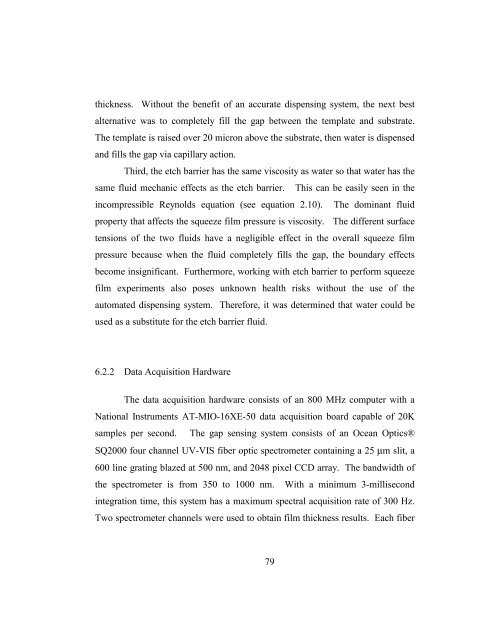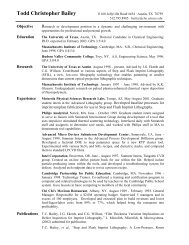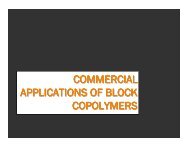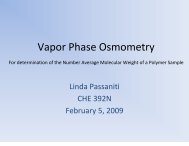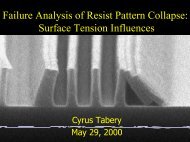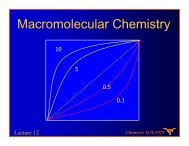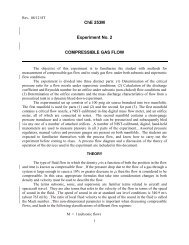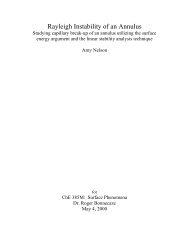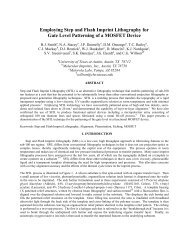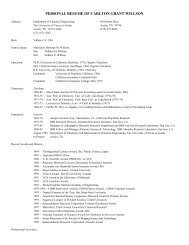Asymmetric fluid-structure dynamics in nanoscale imprint lithography
Asymmetric fluid-structure dynamics in nanoscale imprint lithography
Asymmetric fluid-structure dynamics in nanoscale imprint lithography
- No tags were found...
You also want an ePaper? Increase the reach of your titles
YUMPU automatically turns print PDFs into web optimized ePapers that Google loves.
thickness. Without the benefit of an accurate dispens<strong>in</strong>g system, the next bestalternative was to completely fill the gap between the template and substrate.The template is raised over 20 micron above the substrate, then water is dispensedand fills the gap via capillary action.Third, the etch barrier has the same viscosity as water so that water has thesame <strong>fluid</strong> mechanic effects as the etch barrier. This can be easily seen <strong>in</strong> the<strong>in</strong>compressible Reynolds equation (see equation 2.10). The dom<strong>in</strong>ant <strong>fluid</strong>property that affects the squeeze film pressure is viscosity. The different surfacetensions of the two <strong>fluid</strong>s have a negligible effect <strong>in</strong> the overall squeeze filmpressure because when the <strong>fluid</strong> completely fills the gap, the boundary effectsbecome <strong>in</strong>significant. Furthermore, work<strong>in</strong>g with etch barrier to perform squeezefilm experiments also poses unknown health risks without the use of theautomated dispens<strong>in</strong>g system. Therefore, it was determ<strong>in</strong>ed that water could beused as a substitute for the etch barrier <strong>fluid</strong>.6.2.2 Data Acquisition HardwareThe data acquisition hardware consists of an 800 MHz computer with aNational Instruments AT-MIO-16XE-50 data acquisition board capable of 20Ksamples per second. The gap sens<strong>in</strong>g system consists of an Ocean Optics®SQ2000 four channel UV-VIS fiber optic spectrometer conta<strong>in</strong><strong>in</strong>g a 25 µm slit, a600 l<strong>in</strong>e grat<strong>in</strong>g blazed at 500 nm, and 2048 pixel CCD array. The bandwidth ofthe spectrometer is from 350 to 1000 nm. With a m<strong>in</strong>imum 3-millisecond<strong>in</strong>tegration time, this system has a maximum spectral acquisition rate of 300 Hz.Two spectrometer channels were used to obta<strong>in</strong> film thickness results. Each fiber79


